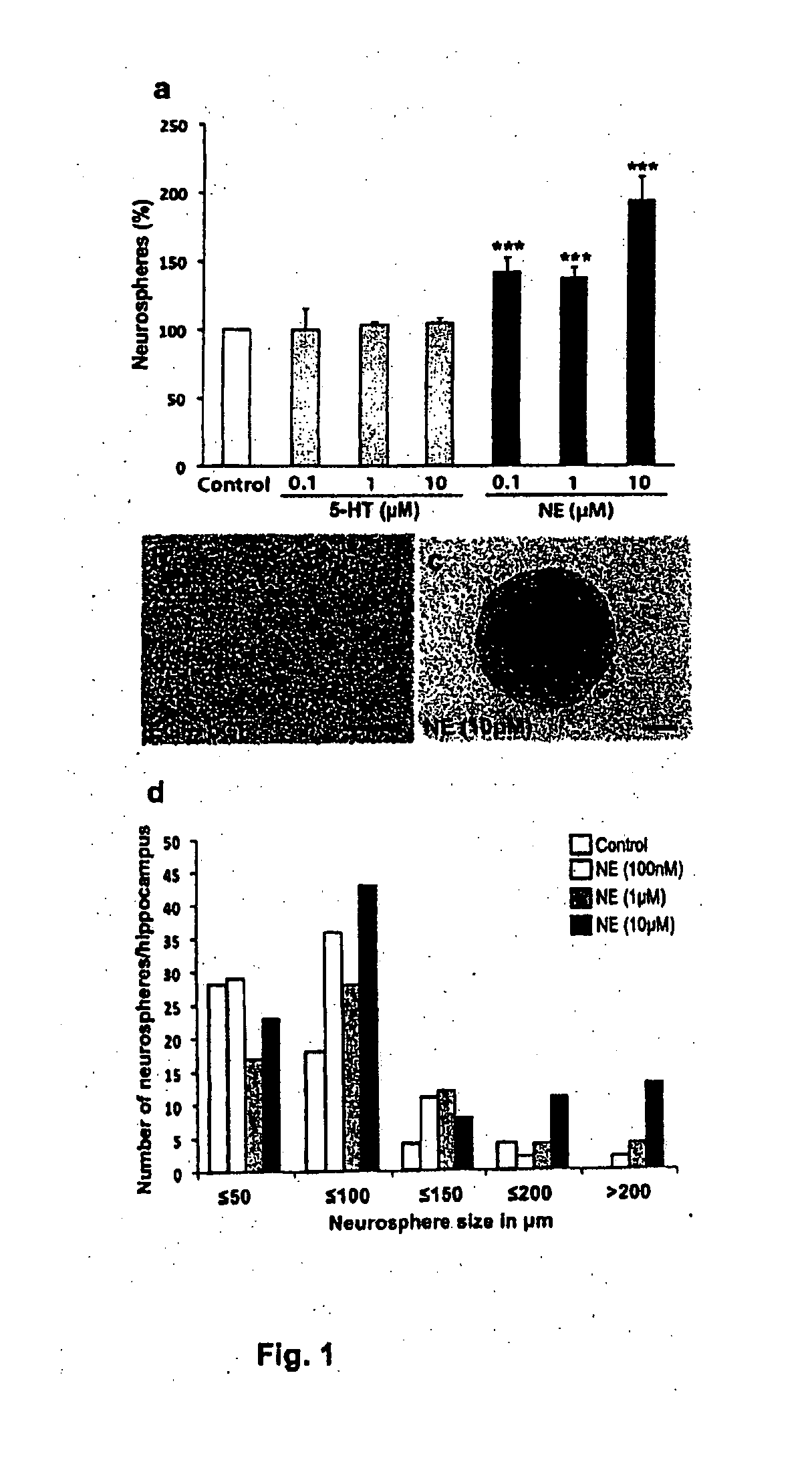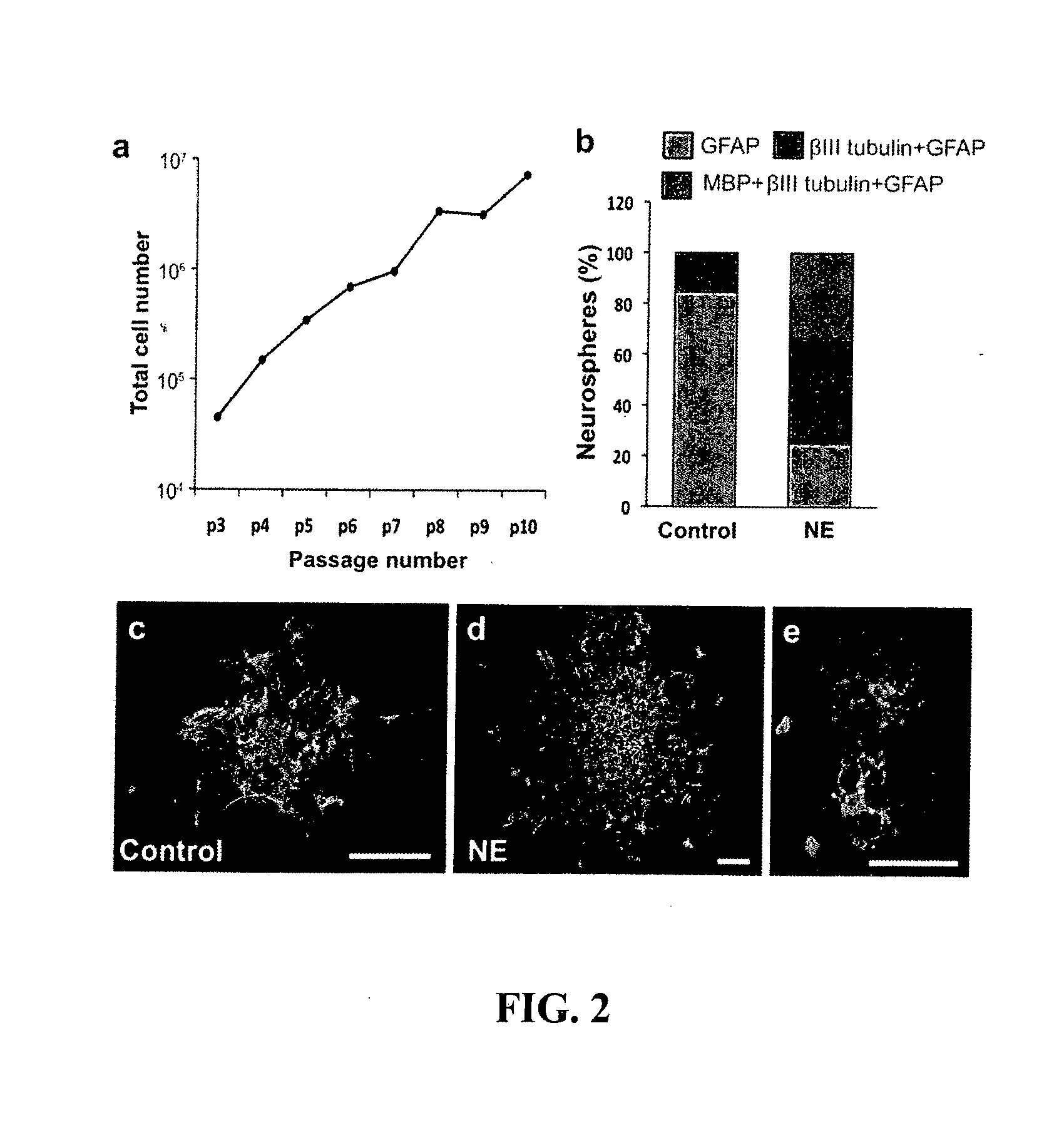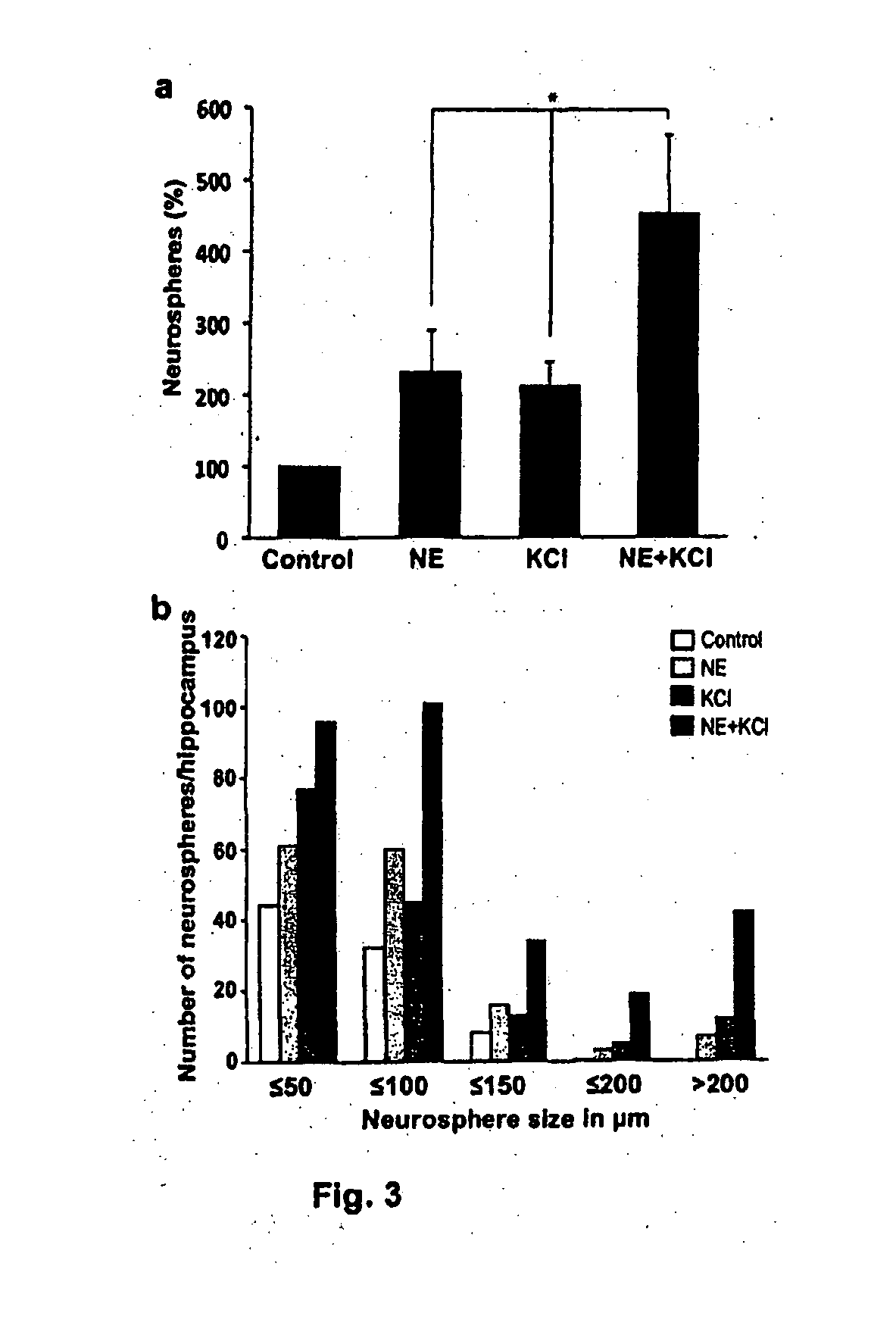Neuronal stimulation
a neural precursor and neuronal technology, applied in the field of neuronal stimulation, can solve the problems of no effective treatment method, depressed mood and loss of interest or pleasure, and economic burden of illness, and achieve the effect of enhancing hippocampal neural precursor activity
- Summary
- Abstract
- Description
- Claims
- Application Information
AI Technical Summary
Benefits of technology
Problems solved by technology
Method used
Image
Examples
example 1
Adult Hippocampal Neurosphere Culture
[0110]Animals were treated in accordance with the Australian Code of Practice for the Care and Use of Animals for Scientific Purposes and ethics approval was obtained for all experiments from the Animal Ethics Committee of the University of Queensland. 8-10 week old male C57 / B16 mice were killed by cervical dislocation and their brains removed. Brains were bisected along the midline in the sagittal plane. The hippocampi were isolated from the overlying cortex and minced using a scalpel blade. Minced tissue was digested in 0.1% papain (Invitrogen, Melbourne, Australia) for 20 minutes at 37° C., after which an excess of NeuroCult NSC basal medium (Stem Cell Technologies, Vancouver, Canada) was added to halt the digestion. Tissue was then centrifuged at 100 rcf for 5 minutes, the resulting pellet was resuspended in 1 ml of complete neurosphere medium, and a single cell suspension was achieved by gentle trituration. The cells were filtered through a ...
example 2
Hes5-GFP Model
[0120]Mice expressing GFP under the control of the Hes5 promoter were generated using standard techniques. Hes5-GFP mice were perfused transcardially using ice-cold 4% paraformaldehyde. Brains were removed and post-fixed in 4% paraformaldehyde for 24 hours, after which 50 μm sections were cut using a freezing microtome. The sections were blocked in PBS containing 0.1% Triton X-100 (0.1% PBTX) and 10% normal goat serum for 1 hour and then labelled with primary antibodies: anti-GFAP (1:500; DakoCytomation), anti-doublecortin (1:500; Sapphire Bioscience, Sydney, Australia) and anti-nestin (1:100, Developmental Studies Hybridoma Bank, Iowa City Iowa). The sections were washed three times using 0.1% PBTX and incubated for 2 hours at room temperature with the secondary antibodies goat anti-mouse Alexa 568 or goat anti-rabbit Alexa 568 (Invitrogen), and DAPI (1:1000). BrdU immunohistochemistry was performed essentially as described previously (Kulkarni et al., 2002, Jha et al...
example 3
β3-Adrenergic Receptors Mediate the Effects of Norepinephrine
[0129]Given that norepinephrine directly activated hippocampal precursors, we next sought to identify the adrenergic receptor(s) mediating this effect. Adrenergic receptors are a diverse family of receptors divided into, two major subclasses, α and β, with six members of the α family and three members of the β family identified to date. The hippocampal cells were treated with specific antagonists to α1 adrenergic receptors (prazosin), α2 adrenergic receptors (yohimbine), or β adrenergic receptors (propranolol) in the presence or absence of norepinephrine (FIG. 6a). Both prazosin (100 nM) and yohimbine (1 μM) failed to inhibit the increase in neurosphere numbers observed in the presence of norepinephrine, whereas propranolol (1 μM) reduced the norepinephrine-mediated response back to control levels (F=0.004), suggesting that β adrenergic receptors are required for norepinephrine-dependent activation of precursors. Interesti...
PUM
 Login to View More
Login to View More Abstract
Description
Claims
Application Information
 Login to View More
Login to View More - R&D
- Intellectual Property
- Life Sciences
- Materials
- Tech Scout
- Unparalleled Data Quality
- Higher Quality Content
- 60% Fewer Hallucinations
Browse by: Latest US Patents, China's latest patents, Technical Efficacy Thesaurus, Application Domain, Technology Topic, Popular Technical Reports.
© 2025 PatSnap. All rights reserved.Legal|Privacy policy|Modern Slavery Act Transparency Statement|Sitemap|About US| Contact US: help@patsnap.com



